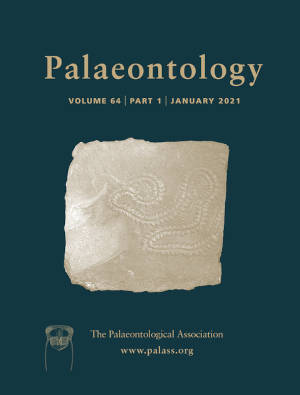Reg. Charity No. 1168330

The latitudinal biodiversity gradient (LBG), the increase in biodiversity from the poles to the equator, is one of the most widely recognized global macroecological patterns, yet its deep time evolution and drivers remain uncertain. The Late Triassic (237–201 Ma), a critical interval for the early evolution and radiation of modern tetrapod groups (e.g. crocodylomorphs, dinosaurs, mammaliamorphs), offers a unique opportunity to explore the palaeolatitudinal patterns of tetrapod diversity since it is extensively sampled spatially when compared with other pre‐Cenozoic intervals, particularly at lower palaeolatitudes. Here, we explore palaeolatitudinal patterns of Late Triassic tetrapod diversity by applying sampling standardization to comprehensive occurrence data from the Paleobiology Database (PBDB). We then use palaeoclimatic model simulations to explore the palaeoclimatic ranges occupied by major tetrapod groups, allowing insight into the influence of palaeoclimate on the palaeolatitudinal distribution of these groups. Our results show that Late Triassic tetrapods generally do not conform to a modern‐type LBG; instead, sampling‐standardized species richness is highest at mid‐palaeolatitudes. In contrast, the richness of pseudosuchians (crocodylians and their relatives) is highest at the palaeoequator, a pattern that is retained throughout their subsequent evolutionary history. Pseudosuchians generally occupied a more restricted range of palaeoclimatic conditions than other tetrapod groups, a condition analogous to modern day reptilian ectotherms, while avemetatarsalians (the archosaur group containing dinosaurs and pterosaurs) exhibit comparatively wider ranges, which is more similar to modern endotherms, such as birds and mammals, suggesting important implications for the evolution of thermal physiology in dinosaurs.
AcknowledgementsWe sincerely thank all contributors to the PBDB Late Triassic tetrapod occurrence data, particularly Matt Carrano. We are grateful to Roger Benson, Roger Close, Natalie Cooper, Christopher Dean, Lydia Greene, and Gene Hunt for invaluable discussions. We thank Alfio Alessandro Chiarenza and an anonymous reviewer for providing helpful and positive comments that were invaluable in improving this manuscript. We also thank editors Phillip Mannion and Sally Thomas for their assistance. This research was initially funded by the European Union's Horizon 2020 research and innovation programme 2014–2018 under grant agreement 637483 (ERC Starting Grant TERRA to RJB), and its completion was supported by a Leverhulme Research Project Grant (RPG‐2019‐365). SEG was supported by NERC grants NE/L011050/1 and NE/P01903X/1 while working on this manuscript. AF and DJL acknowledge funding from National Environmental Research Council through NE/I005722/1, NE/I005714/1, and NE/P013805/1. Silhouettes of fossil creatures were sourced from http://www.phylopic.org/ with thanks to: Michael B. H. (Morganucodon; CC BY 3.0 licence); Steven Traver (dicynodont and Hyperodapedon; CC0 1.0); Dmitry Bogdanov (Metoposaurus and Polonosuchus; vectorized by T. Michael Keesey; CC BY 3.0); Ghedo and T. Michael Keesey (rhynchocephalian, CC BY‐SA 3.0); Nobu Tamura (procolophonid; vectorized by A. Verrière; CC BY‐SA 3.0); Scott Hartman (Parasuchus, aetosaur, Lagerpeton; all CC BY 3.0); Emily Willoughby (Coelophysis; CC BY‐SA 3.0). The silhouette of Hesperosuchus was sourced from Wikimedia Commons (CC BY 2.5) and vectorized by Thomas Clements.